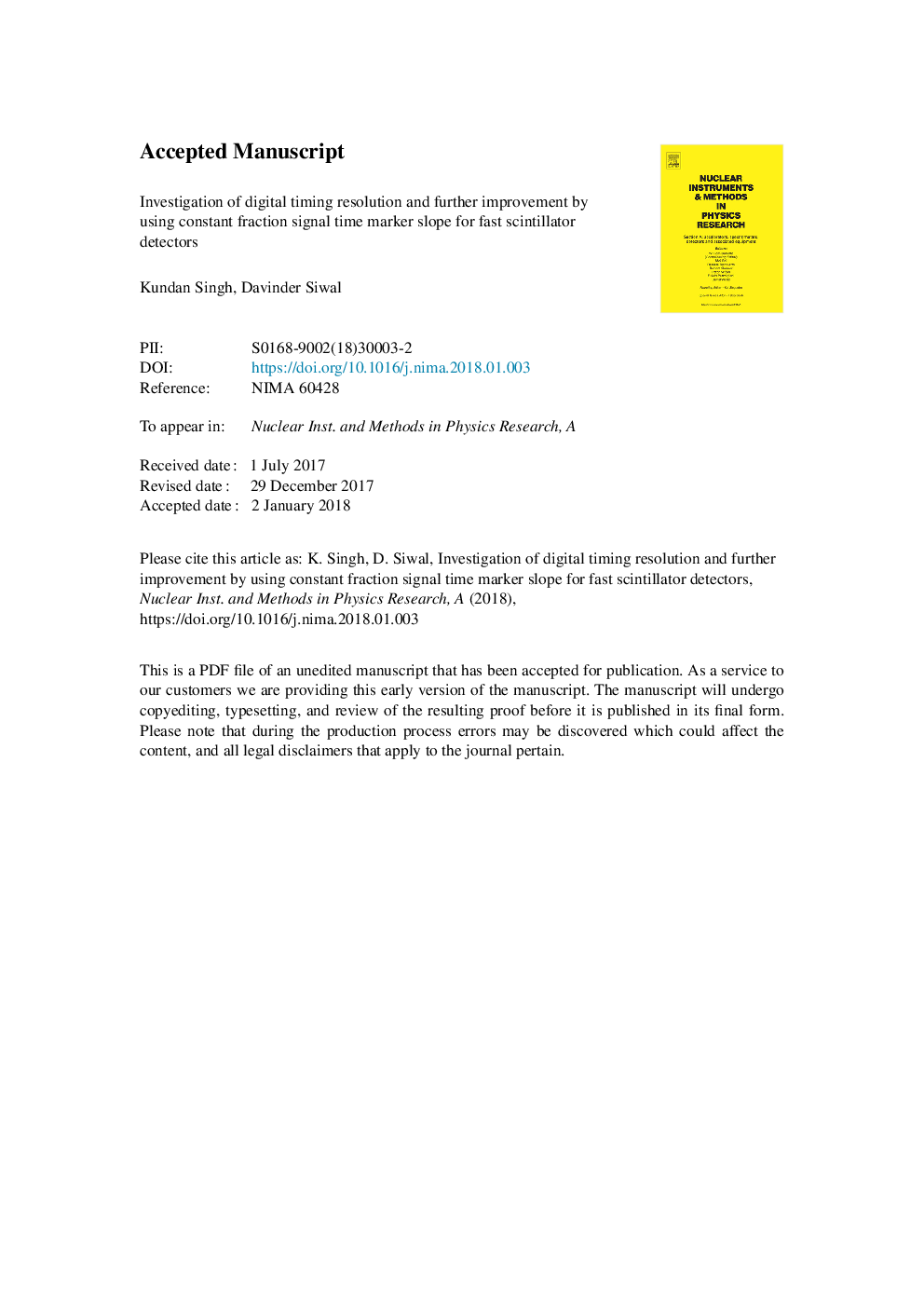| کد مقاله | کد نشریه | سال انتشار | مقاله انگلیسی | نسخه تمام متن |
|---|---|---|---|---|
| 8166792 | 1526240 | 2018 | 28 صفحه PDF | دانلود رایگان |
عنوان انگلیسی مقاله ISI
Investigation of digital timing resolution and further improvement by using constant fraction signal time marker slope for fast scintillator detectors
ترجمه فارسی عنوان
بررسی قطعنامه های زمان بندی دیجیتال و بهبود بیشتر با استفاده از شیب نشانگر زمان سیگنال ثابت برای آشکارسازهای سریع آشکارساز
دانلود مقاله + سفارش ترجمه
دانلود مقاله ISI انگلیسی
رایگان برای ایرانیان
کلمات کلیدی
موضوعات مرتبط
مهندسی و علوم پایه
فیزیک و نجوم
ابزار دقیق
چکیده انگلیسی
A digital timing algorithm is explored for fast scintillator detectors, viz. LaBr3, BaF2, and BC501A. Signals were collected with CAEN 250 mega samples per second (MSPS) and 500 MSPS digitizers. The zero crossing time markers (TM) were obtained with a standard digital constant fraction timing (DCF) method. Accurate timing information is obtained using cubic spline interpolation of a DCF transient region sample points. To get the best time-of-flight (TOF) resolution, an optimization of DCF parameters is performed (delay and constant fraction) for each pair of detectors: (BaF2-LaBr3), (BaF2-BC501A), and (LaBr3-BC501A). In addition, the slope information of an interpolated DCF signal is extracted at TM position. This information gives a new insight to understand the broadening in TOF, obtained for a given detector pair. For a pair of signals having small relative slope and interpolation deviations at TM, leads to minimum time broadening. However, the tailing in TOF spectra is dictated by the interplay between the interpolation error and slope variations. Best TOF resolution achieved at the optimum DCF parameters, can be further improved by using slope parameter. Guided by the relative slope parameter, events selection can be imposed which leads to reduction in TOF broadening. While the method sets a trade-off between timing response and coincidence efficiency, it provides an improvement in TOF. With the proposed method, the improved TOF resolution (FWHM) for the aforementioned detector pairs are; 25% (0.69Â ns), 40% (0.74Â ns), 53% (0.6Â ns) respectively, obtained with 250 MSPS, and corresponds to 12% (0.37Â ns), 33% (0.72Â ns), 35% (0.69Â ns) respectively with 500 MSPS digitizers. For the same detector pair, event survival probabilities are; 57%, 58%, 51% respectively with 250 MSPS and becomes 63%, 57%, 68% using 500 MSPS digitizers.
ناشر
Database: Elsevier - ScienceDirect (ساینس دایرکت)
Journal: Nuclear Instruments and Methods in Physics Research Section A: Accelerators, Spectrometers, Detectors and Associated Equipment - Volume 886, 1 April 2018, Pages 61-70
Journal: Nuclear Instruments and Methods in Physics Research Section A: Accelerators, Spectrometers, Detectors and Associated Equipment - Volume 886, 1 April 2018, Pages 61-70
نویسندگان
Kundan Singh, Davinder Siwal,
